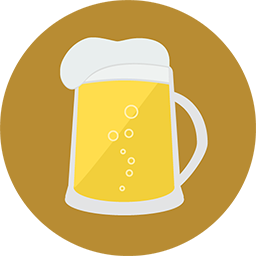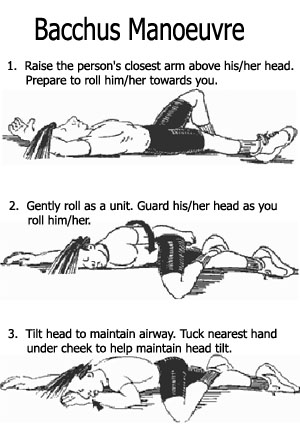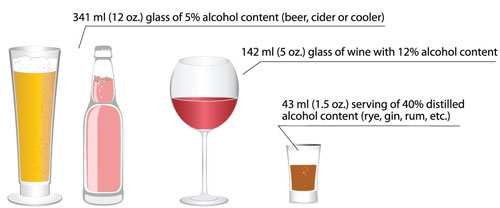
Alcohol on Campus
Harm Reduction facts about Alcohol and student-life.
By Student Wellness CentreContrary to Popular Belief…
- Not all USask students drink!
- Most students do not binge drink!
- Most students do not drive after drinking.
89% of students report using a designated driver if they have been drinking.
Canadian Campus Wellbeing Survey 2023
Alcohol and Athletic Performance
It’s great to celebrate a win, but just remember that alcohol can work against you by possibly damaging your performance as an athlete or hindering your progress to be a fit and healthy person.
Drinking may...
- Reduce your sleep quality
- Cause several types of cancer including breast and colon
- Weakens the heart's ability to function effectively and efficiently.
- Dehydrates you, which reduces your stamina.
- Decreases your overall performance: decision making, strength, balance, coordination, muscular and cardiovascular endurance, speed, agility, and metabolism are all reduced.
If You Choose to Drink and Be Active
- Avoid alcohol 48 hours before training or playing sports.
- Rehydrate with non-alcoholic drinks after your exercise and then eat. After that, drink moderately and responsibly.
Alcohol and Academic Performance
There is little doubt that alcohol use has a damaging effect on academic performance. Alcohol affects your whole body, but the most profound effects are on the brain which can persist for long periods of time.
4.5% of U of S students reported alcohol use affecting their individual academic performance.
Drinking may...
- Affect the brain cells that are associated with memory, coordination, and judgment. This explains why you forget what you did, stumbled around, and did something you later regretted.
- Shorten your attention span for up to 48 hours after drinking.
- Take up your valuable study time or cause you to skip class from being hungover.
If You Choose to Drink and Do Well in School
- Get your work done before drinking.
- Limit drinking to the weekends.
- Follow the drinking guidelines, even on weekends.
Alcohol and Sexual Performance
Many people use alcohol to enhance their romantic and sexual feelings, which is usually fine. However, alcohol is often the cause of problematic sexual outcomes such as unplanned pregnancy, sexual dysfunction, and transmission of sexually transmitted infections (STIs). Approximately 21.5% of U of S students report having unprotected sex while under the influence of alcohol.
Drinking may...
- Decrease arousal and sexual response.
- Reduce the likelihood of any sex discussion (e.g., both parties truly consenting, sexual history, and birth control methods).
- Increase the risk of unwanted sexual contact.
- Impair judgement and decision-making, thereby increasing your chance of engaging in risky sexual behaviour.
If You Choose to Drink and Be Sexually Active
- Bring condoms when going out.
- Stick with your friends and don’t go with people you have just met or people you don’t know well.
Canada's Guidance on Alcohol and Health
Drinking Less is Better
CGAH shares evidence-based advice on alcohol consumption. This guidance is based on the principle that everyone has a right to know that all alcohol use comes with risk.
There is a continuum of risk associated with weekly alcohol use where the risk of harm is:
-
- 0 drinks per week — Not drinking has benefits, such as better health, and better sleep.
- 2 standard drinksor less per week — You are likely to avoid alcohol-related consequences for yourself or others.
- 3–6 standard drinks per week — Your risk of developing several types of cancer, including breast and colon cancer.
- 7 standard drinks or more per week — Your risk of heart disease or stroke increases significantly.
- Each additional standard drinkradically increases the risk of alcohol-related consequences.
Consuming more than 2 standard drinks per occasion is associated with an increased risk of harms to self and others, including injuries and violence.
- When pregnant or trying to get pregnant, there is no known safe amount of alcohol use.
- When breastfeeding, not drinking alcohol is safest.
- No matter where you are on the continuum, for your health, less alcohol is better.
Aim to drink less
- Avoid drinking games,
- Drink lots of water
- Choose alcohol-free or low-alcohol beverages
- Eat before and while you’re drinking.
- Have alcohol-free days and weeks. Do alcohol-free activities
For more information go to Canadian Center for Substance Use and Addiction
What is High Risk Drinking?
All drinking involves risk. We all metabolize and tolerate alcohol differently; the effects are different for each person but all effects involve health and impairment risks.
High Risk Drinking Can Lead To
- High risk choices.
- Increased risk for violence and injuries.
- Unwanted or unplanned sexual activity.
- Poor academic performance.
- Memory loss and "blacking out."
- Alcohol poisoning.
Frequent High Risk Drinking Can Lead To
- Weakening of the immune system (e.g., the flu, colds, and sinus problems).
- Neurological problems, including impaired motor skills, deterioration of vision, seizures, and permanent brain damage.
- Liver cirrhosis, various cancers, high blood pressure, and heart problems.
Harm Reduction Counsellor
The Student Wellness Centre at the USask
The Student Wellness Centre has a Harm Reduction Counsellor available to assist students in the area of substance use. Prioritizing the student’s well-being by offering non-judgmental counselling, guidance, resources, and education to empower students in making informed choices regarding substance use and mental health. Call 306-966-5768
Thinking about your own Substance Use?
It's important to reflect on your own relationship with substances. Below are terms to consider to see if they apply to you.
State Dependent Restriction, what is is? A memory change that can occur. State dependent restrictions means what we learn or experience in one mental or emotional state is best recalled in that same state. This can occur with alcohol, marijuana, and a variety of other drugs. The things we learn while sober are recalled best when we are sober. However, things we learn while using alcohol or drugs are not remembered as well when we are sober. (O'Bryan, 2020)
Memory Blackouts. Memory blackouts happen with alcohol and with some drugs, especially some sedatives such as benzodiazepines and some sleeping pills. We are not passed out, but we are unable to remember things that happened while we were awake and making high-risk choices. They are blank holes in our memory. Sometimes people joke about blackouts, and they can seem funny. However, when you think about it, putting enough chemical in my brain to prevent it from recording memory is serious. If I say or do something that damages a relationship, I may never know what happened, how it happened, or even that it did happen. (O'Bryan, 2020)
Moving from “Take-it-or-Leave-it” to “Anticipation.” This can apply to how you feel about substances or behaviors (gaming, pornography, shopping, gambling, etc).
Some of these brain changes set us up to increasingly value alcohol, drugs or certain behaviors/activities. We begin to value high-risk choices more and the attitude shifts from “take-it-or-leave-it” to “anticipation.” The thought of substances or certain behaviors activates the pleasure/reward center in the brain simply by thinking about OR anticipating the behavior. People begin to look forward to high-risk drinking or drugs as much as the event (concert, wedding, socializing with friends, etc). They start to plan their activities around the substance or certain behaviors they want to ensure fits into their day and/or plans. (O'Bryan, 2020)
Sense of Relationship
Another aspect of increasing importance is if we develop a sense of relationship with our substances or certain behavior choices (social media, gaming, gambling, pornography). It might sound odd to think of forming a relationship with alcohol, drugs or behavior patterns but that is how the experience is beginning to look and feel. The integration of the alcohol and drugs into our lives and the state dependent restriction create a sense of relationship. High-risk choices might become as important as other relationships in our lives. When something good or bad happens to us, most of us want to share that with someone we care about for celebration or support. However, for people who get to this level of dependence, their first thought might be to drink, use drugs, gamble or shop as examples to celebrate or feel better. Its often seen as a “reward.” (O'Bryan, 2020)
Be Aware of Alcohol Poisoning
People can experience alcohol poisoning and do not even realize it. Alcohol can slow down many bodily functions including breathing and the gag reflex (which prevents choking). This can lead to the point of unconsciousness, after which your heart and lungs have the potential to stop.
If someone passes out because they are really drunk, leaving them to “sleep it off” is a dangerous idea.
Signs of Alcohol Poisoning
- Recently consumed alcohol.
- Clammy, pale skin.
- Vomiting.
- May have seizures.
- Slow or irregular breathing.
- Low body temperature.
- Unable to be woken up.
- Unconciousness.
DO NOT LEAVE SOMEONE WHO HAS PASSED OUT TO “SLEEP IT OFF!"
If You Think Someone Has Alcohol Poisoning
- Try to wake the person. If you cannot, or they exhibit any signs of alcohol poisoning, call 9-1-1.
- Position the person onto their side so the person doesn’t roll over onto their back where they can choke on their vomit.
- Check skin colour or temperature. Pale/bluish and clammy skin means they are not getting enough oxygen.
- Monitor the person’s breathing. Call an ambulance if the person has irregular or slow breathing.
If you aren’t sure if the individual is suffering from alcohol poisoning, CALL FOR HELP.

What is a Standard Drink?

Saskatchewan's Impaired Driving Laws
Zero Tolerance for Alcohol or Drugs
- Zero tolerance for alcohol or drugs for drivers 21 and under and for all new drivers (60-day license suspension on 1st offence still applies).
- 3-day vehicle seizure for experienced drivers with .04 to .08 BAC on a 1st offence.
Ignition Interlock Duration
- .08 to .159 BAC or impaired:
- 1st offence — 1 year
- 2nd offence — 3 years
- 3rd and subsequent offences — 10 years
- Over .16 BAC or refuse breath sample:
- 1st offence — 2 years
- 2nd offence — 5 years
- 3rd and subsequent offences — 10 years
- Zero BAC for new drivers and drivers 21 and under:
- 3rd offence — mandatory ignition interlock for 365 days, after 365-day suspension
Strengthened Cellphone Legislation
- Drivers prohibited from holding, viewing, using, or manipulating a cellphone while driving.
Facts about Saskatchewan
- Saskatchewan had far more impaired driving charges in 2015 than other provinces — more than twice as many as Manitoba.
- 575 drunk driving charges per 100,000 population is nearly triple the national rate, and over five times the rate in Ontario.
- Saskatchewan has a relatively young population, and they have a high incidence of impaired driving deaths.
- Statistics Canada reported that Saskatchewan had the highest impaired driving rate among the provinces in 2015.
- There were nearly 1,200 impaired driving collisions in Saskatchewan during 2015, killing 54 people and injuring 580 others.
How to Be Safe
- Have a non-drinking designated driver.
- Call a cab or a relative for a ride.
- Stay the night.
- Drink in moderation and know the Low Risk Drinking Guidelines (LRDG).
- Participate in non-alcohol activities.
- Eat a good meal before going out and eat food as you drink — food helps slow the absorption of alcohol.
Drunkorexia
What is Drunkorexia?
Drunkorexia is a non-medical term coined by popular media that describes the combination of extreme dieting behaviours and binge drinking. It also refers to extreme weight-control behaviours to compensate for planned binge drinking.
Symptoms
- Counting daily calorie intake, or “calorie counting”, to ensure weight is not gained when consuming alcohol.
- Missing or skipping meals to conserve calories for consumption of alcohol beverages.
- Excessive exercise to balance out calories consumed from alcohol.
- Ingesting extreme amounts of alcohol to induce vomiting of previously digested food.
Risks and Dangers
Drinking on an empty stomach results in greater alcohol toxicity. This can lead to:
- Alcohol poisoning.
- Unintentional injuries and violence.
- Brain and organ damage.
- Poor nutritional status.
- Memory lapses and poor academic performance.
Why It Doesn’t Work
- Alcohol often contains far more calories than a balanced meal and has far less nutritional value.
- Calorie restriction lowers your blood sugar which makes you crave and eat (or drink) even more.
Who is at Risk?
- Women are more likely to report symptoms that describe drunkorexia (Bryant et al (2012)).
- 45% of college women report restricting their caloric intake on drinking days as compared to 29% of men (McCoy and Wagoner (2009)).
- Multiple investigations have found positive association between the severity of dieting and binging and the frequency and intensity of alcohol use in women during their first year of college (Krahn et al., 2004; Stewart et al., 2000).
Healthier Alternatives
- Eat a meal prior to going out for a night of drinking.
- Participate in social activities that do not involve alcohol and promote physical activity.
- Know the Low Risk Drinking Guidelines (LRDG).
- Practice positive self-talk and body positivity.
Positive Affirmations
Take the pledge to be kinder to yourself. For example:
- "We define who we are, not the media."
- "I'm proud of my healthy body and want to keep it that way."
- "I'm able because I think I'm able."
Managing Stress Without Depending on Alcohol

Student life can be stressful when trying to balance responsibilities and a social life. When stress occurs students sometimes turn to alcohol as a form of relief. However, this technique doesn’t alleviate your stress, it only masks it. Thankfully, there are other ways to cope with stress without reaching for the bottle. Some ideas includes:
- Deep breathing (in for four counts, hold for two counts, exhale for five counts).
- Exercise (e.g., go for a walk, jog, or do yoga).
- Take a bath.
- Watch a video that will make you laugh or smile.
- Talk to friends and family.
Top Ten Party Snacks
Top Ten Party Snacks
- Popcorn
- Veggies and dip
- Fruit
- Salsa
- Spinach dip with pita chips
- Mixed nuts
- Guacamole
- Salami and cheese
- Bruschetta
- Crackers and hummus
Activities to Try
- Rock climbing
- Batting cages
- Bowling
- Hiking
- Swimming
- Golfing
- Trampoline park
- Frisbee
- Skiing
Resources
If you are concerned with your drinking habits, you are certainly not alone. The University of Saskatchewan has numerous resources that you can turn to:
- Student Wellness Centre 306-966-5768
- SHA Community Addictions Services 306-655-7777

